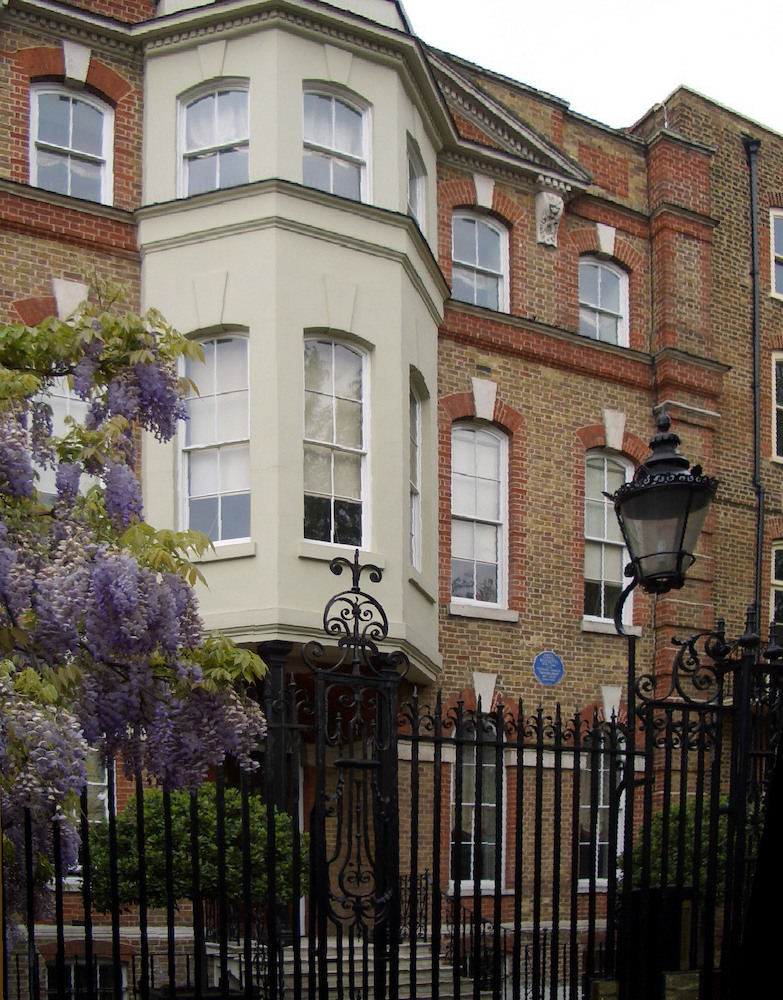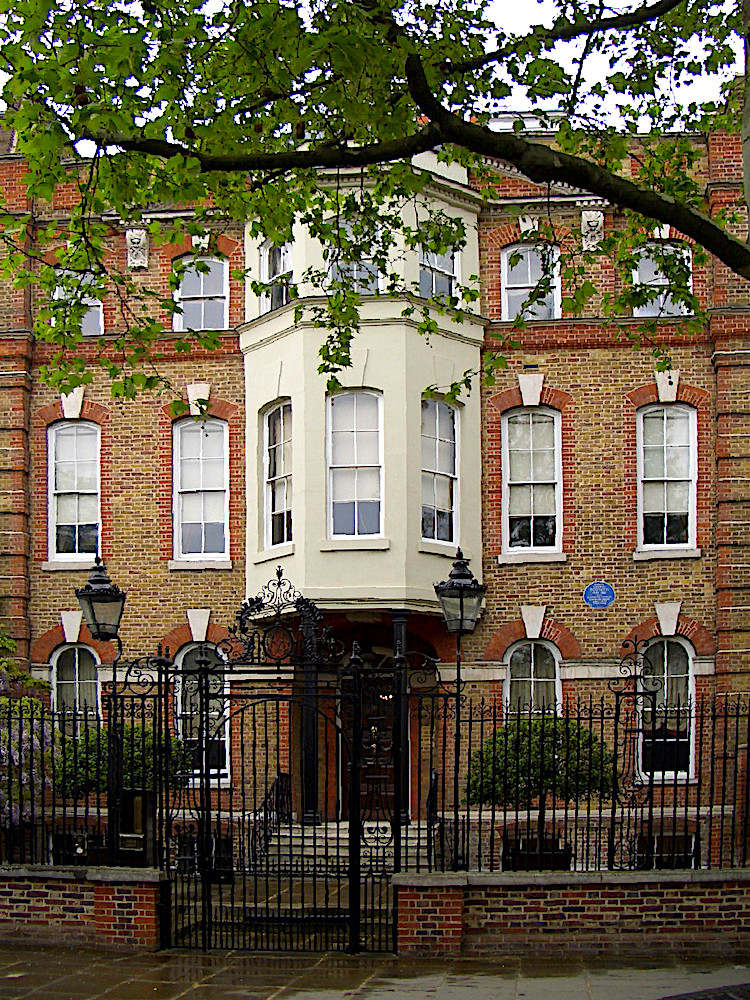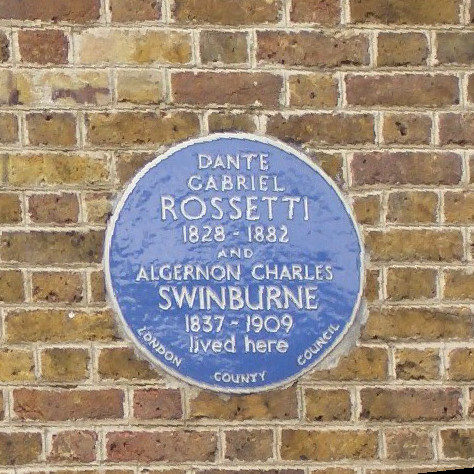

Dante Gabriel Rossetti's house at 16 Cheyne Walk, Chelsea, London SW3. Built in 1817 to the designs of the builder John Witt, this impressive house in its prestigious location is where Rossetti "did most of his best painting and wrote much of his poetry ... and in the garden kept a collection of kangaroos, marmots, wombats, and wallabies (Mee 583). There were noisy peacocks, too, to the annoyance of the neighbours (see Weinreb et al. 162).
According to the Survey of London, No. 16 was known as Queen's House. The ironwork here is particularly fine — both sources quoted above note that it is the finest and best preserved in the whole of Chelsea. The house originally belonged to someone called Richard Chapman, hence the initials on the cresting of the gate. Rossetti's studio was in the large ground floor room at the back of the house overlooking the garden.

Blue plaque mentioning Swinburne
as well as Rossetti.
The house has many associations for Victorianists. The first is Charles Kingsley: in the basement, "young Charles Kingsley and his brother Henry did chemistry experiments with two companions" (Mee 583). Both Algernon Swinburne and William Michael Rossetti moved in with Rossetti at the beginning, in 1862; George Meredith was meant to, and although he did not do so formally, he was a frequent visitor in those early days. Many other famous Victorians, including Lewis Caroll, visited. In fact, "The house became a meeting-place for poets and artists during the years 1871-81" (Weinreb et al. 162).
Photographs and text by Jacqueline Banerjee. You may use these images without prior permission for any scholarly or educational purpose as long as you (1) credit the photographer and (2) link your document to this URL in a web document or cite the Victorian Web in a print one.]
Links to related material
- Wrought iron gates and fencing at 16, Cheyne Walk
- H. Treffry Dunn's painting of Rossetti's bedroom
- H. Treffry Dunn's painting of Rossetti's drawing-room
- Dante Gabriel Rossetti, in his Back Garden, as imagined by Max Beerbohm in 1904
- The Small Hours in the Sixties at 16, Cheyne Walk. — Algernon Reading "Anactoria" to Gabriel and William, as imagined by Max Beerbohm in 1904
Bibliography
Mee, Arthur. London: Heart of the Empire and Wonder of the World. London: Hodder & Stoughton, 1937.
Godfrey, Walter H. "Cheyne Walk: Queen's House (No. 16)." Survey of London: Volume 2, Chelsea, Pt I. London: London County Council, 1909: 54-60. British History Online. Web. 28 June 2022.
Weinreb, Ben, Christopher Hibbert, Julia Keay and John Key. The London Encyclopaedia. Third ed. London: Macmillan, 2008.
Last modified 28 June 2022